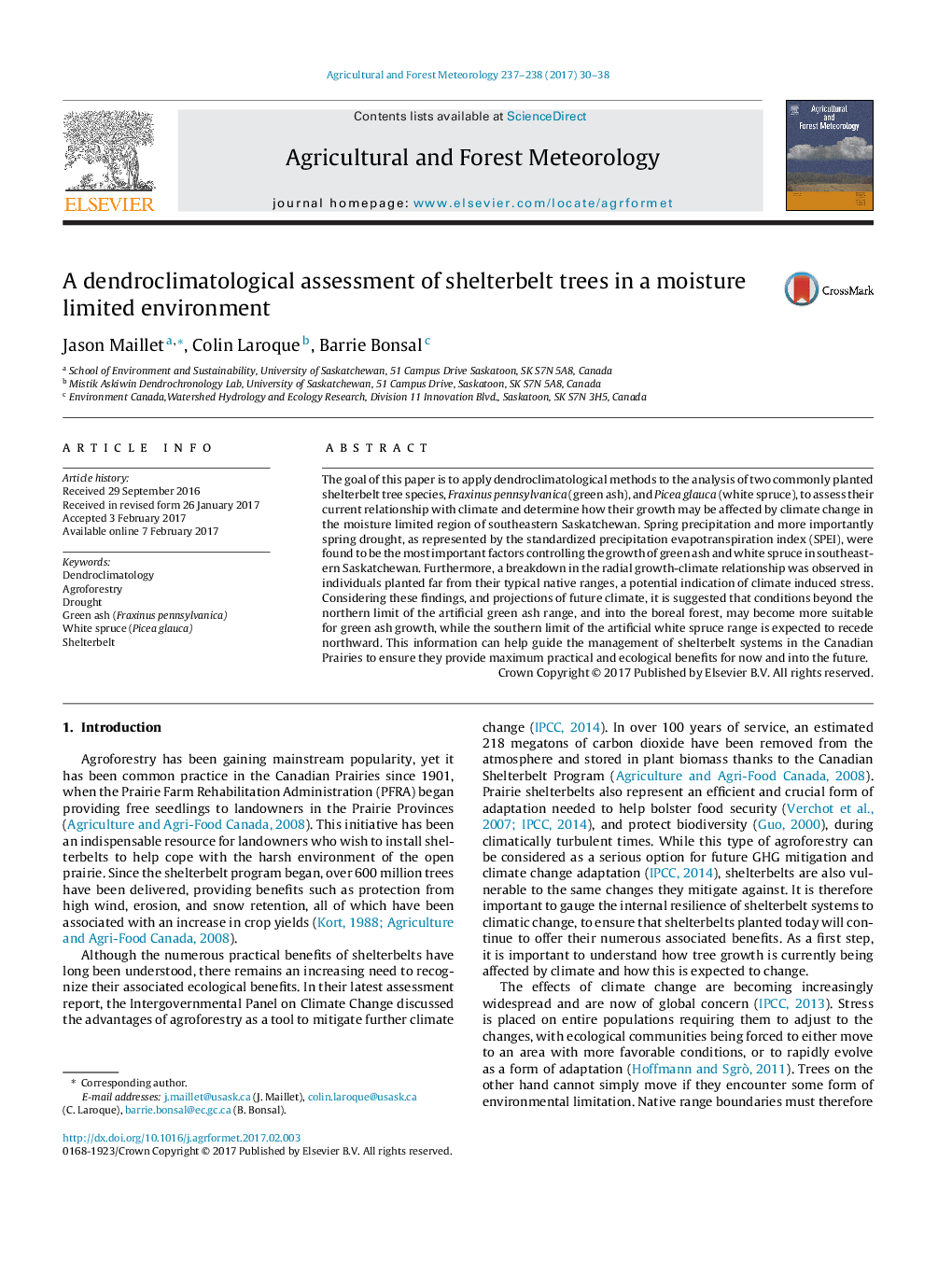| Article ID | Journal | Published Year | Pages | File Type |
|---|---|---|---|---|
| 6457894 | Agricultural and Forest Meteorology | 2017 | 9 Pages |
â¢Green ash and white spruce growth in Saskatchewan is heavily influenced by drought.â¢A shift in the growth-climate relationship indicates possible climatic stress.â¢The boundary of white spruce in Saskatchewan is expected to recede northward.â¢The boundary of green ash in Saskatchewan is expected to extend northward.â¢Informed management will help maximize the benefits of shelterbelt systems.
The goal of this paper is to apply dendroclimatological methods to the analysis of two commonly planted shelterbelt tree species, Fraxinus pennsylvanica (green ash), and Picea glauca (white spruce), to assess their current relationship with climate and determine how their growth may be affected by climate change in the moisture limited region of southeastern Saskatchewan. Spring precipitation and more importantly spring drought, as represented by the standardized precipitation evapotranspiration index (SPEI), were found to be the most important factors controlling the growth of green ash and white spruce in southeastern Saskatchewan. Furthermore, a breakdown in the radial growth-climate relationship was observed in individuals planted far from their typical native ranges, a potential indication of climate induced stress. Considering these findings, and projections of future climate, it is suggested that conditions beyond the northern limit of the artificial green ash range, and into the boreal forest, may become more suitable for green ash growth, while the southern limit of the artificial white spruce range is expected to recede northward. This information can help guide the management of shelterbelt systems in the Canadian Prairies to ensure they provide maximum practical and ecological benefits for now and into the future.
